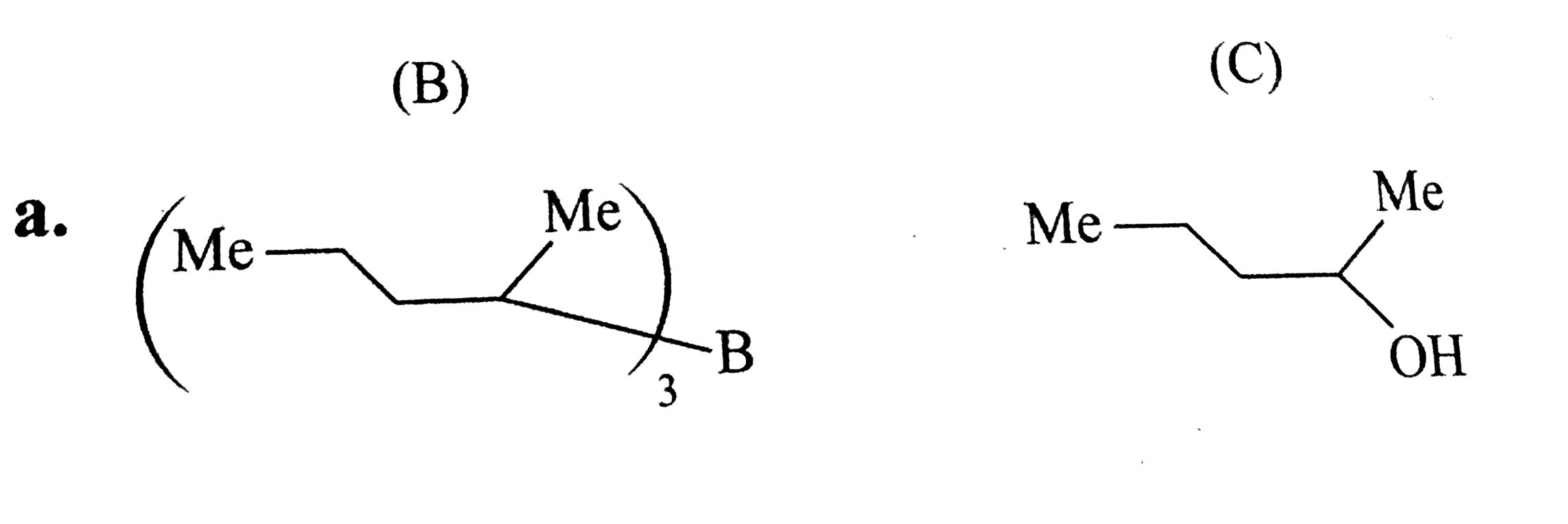What sort of informations can you draw from the following reaction?
(CN)2(g)+2ΘOH(aq)→CNΘ(aq)+CNOΘ(aq)+H2O(l)
The oxidation number of carbon in (CN)2,CN− and CNO− are +3, +2 and +4 respectively . These are obtained as shown below :
Let the oxidation number of C be x .
(CN)2
2(x−3)=0
∴x=3
CN−
x−3=−1
∴x=2
CNO−
x−3−2=−1
∴x=4
The oxidation number of carbon in the various species is :
(+3CN)2(g)+2OH−(aq)→+2CN−(aq)++4CNO−(aq)+H2O(l)
It can be easily observed that the same compound is being reduced and oxidised simultaneously in the given equation. Reactions in which the same compound is reduced and oxidised is known as disproportionation reactions. Thus, it can be said that the alkaline decomposition of cyanogen is an example of disproportionation reaction.
Topper's Solved these Questions
- REDOX REACTIONSBOOK - NCERTCHAPTER - REDOX REACTIONSEXERCISE - EXERCISE
30 Videos
- ORGANIC CHEMISTRY- SOME BASIC PRINCIPLES AND TECHNIQUESBOOK - NCERTCHAPTER - ORGANIC CHEMISTRY- SOME BASIC PRINCIPLES AND TECHNIQUESEXERCISE - EXERCISE
40 Videos
- SOME BASIC CONCEPTS OF CHEMISTRY BOOK - NCERTCHAPTER - SOME BASIC CONCEPTS OF CHEMISTRY EXERCISE - EXERCISE
36 Videos
Similar Questions
Knowledge Check
 H2O2+ΘOHA
H2O2+ΘOHA B
B C
C D
D
Which of the statements are correct about the following reactions ?
MeCHO+[Ag(NH3)2]⊕+ΘOH+→MeCOOΘ+AgAThe equivalent weight of MeCHO is 22.BThree moles of ΘOH are required in the above reaction.CMeCHO is an oxidising agent.DReduction of [Ag(NH3)2]⊕ occurs.Observe the following reaction,
2NO2(g)+2OH−(aq)→NO−3(aq)+H2O(l)+NO−2(aq) in this reaction,AOH− is oxidised to H2OBOH− is reduced to H2OCNO2(g) is reduced to NO−2 (aq) and oxidised to NO−3 (aq)DNO2(g) is reduced to NO−3(aq) and oxidised to NO−2 (aq)
Identify the substance oxidised substance reduced, oxidising agent, and reducing agent for each of the following reactions:
a. 2AgBr(s)+C6H6O2(aq)→2Ag(s)+2HBr(aq)+C6H4O2(aq)
b. HCHO(l)+2[Ag(NH3)3]⊕+3ΘOH(aq)→2Ag(s)+HCOOΘ(aq)+4NH3(aq)+2H2O(l)
c. HCHO(l)+2Cu2+(aq)+5ΘOH(aq)→Cu2O(s)+HCOOΘ(aq)+3H2O(l)
d. N2H4(l)+2H2O2(l)→N2(g)+4H2O(l)
d. Pb(s)+PbO2(s)+2H2SO4(aq)→2PbSO4(s)+2H2O(l)
View SolutionWhat are conjugate acids and bases ? Select the conjugate acid-base pair from the following reactions:
NH3(aq)+H2O(l)⇔NH+4(aq)+OH− (aq)
HCN(aq)+H2O(l)⇔H3O+(aq)+CN−(aq)
View SolutionWrite balanced ionoic half equation (oxidation and reduction) for each of the following reactions:
(a) Mn3+(aq)→MnO2(s)+Mn2+(aq)
(b) Mn(s)+NOӨ3(aq)→Mn2+(aq)+NO2(g)
(c ) H2O2(aq)+Fe2+(aq)→Fe3+(aq)+H2O(l)
(d) Te(s)+NOӨ3(aq)→TeO2(s)+NO(g)
View SolutionThe heat liberated in the following reaction
H+(aq)+OH−(aq)→H2O(l) is
View SolutionIn the reaction
H2O2(aq)I−−−→H2O(l)+12O2(g), where I− is
View Solution
